North Wales is a land of epic terrain, with unbroken chains of undulating hills, ancient woodlands, and miles of untouched beaches. Peppered across this dramatic landscape are dozens of enchanting towns and villages, each packed with personality and Celtic charm.
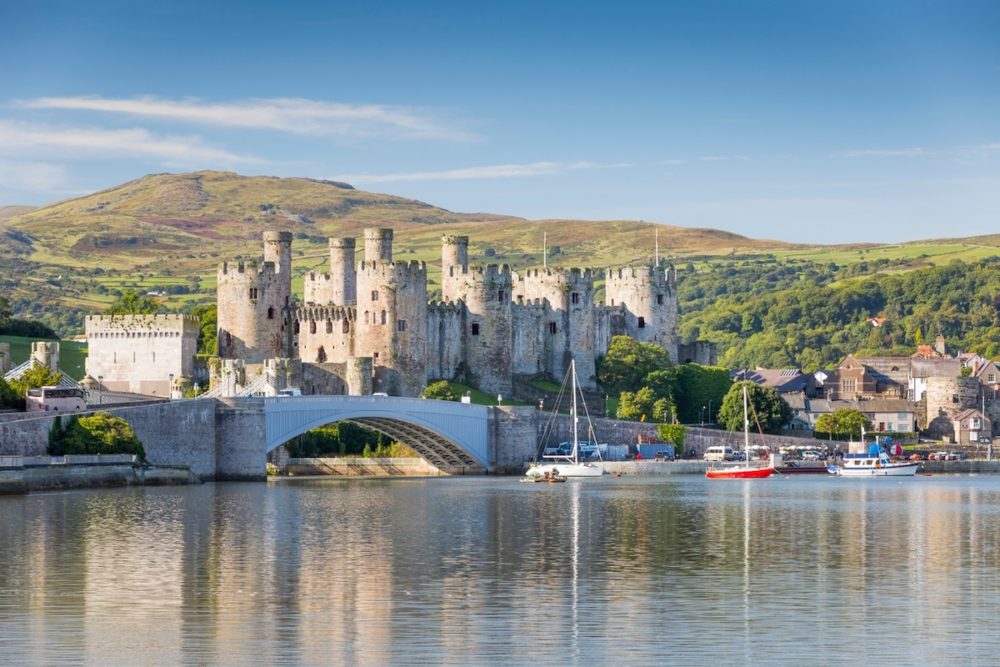
Conwy Castle (Photo: Visit Wales)
Stretching from the borderlands of Wrexham and Llangollen in the east to the wind-whipped coast of Anglesey in the west, North Wales is filled with myth, legend, poetry and song. You can drive from one side to the other in just two hours, but that means missing out on a litany of grand Victorian seaside towns, fashionable beach resorts, historic walled settlements and film set-perfect villages. And, each of these has its own distinctive character and charm, be it Mediterranean-inspired porticoes or medieval castles. To help you on your way, we’ve rounded up ten of the most charming towns and villages in North Wales.
Abersoch
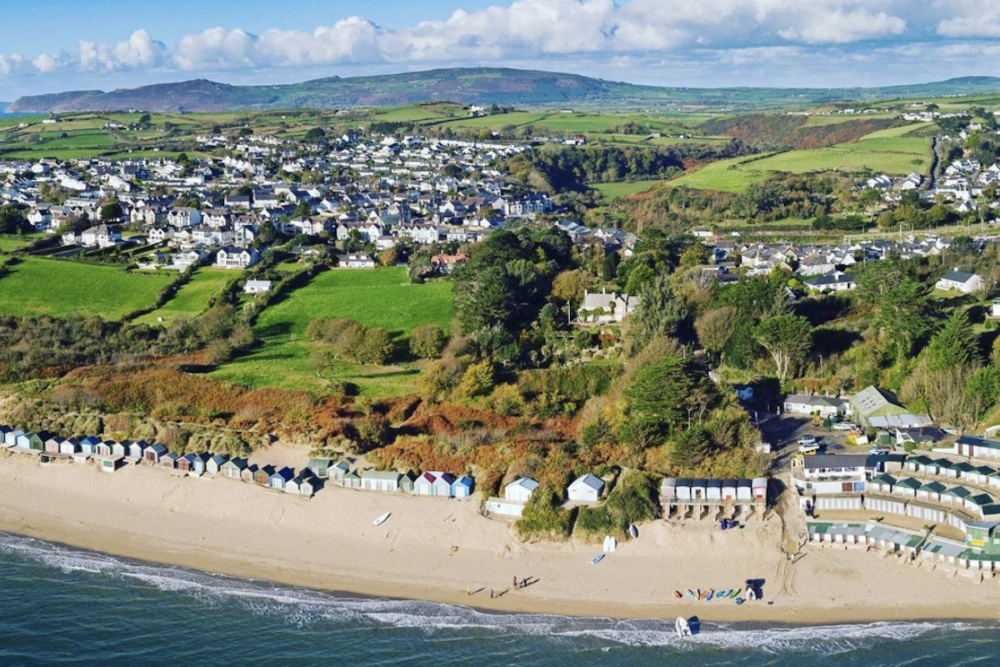
Abersoch (Photo: Visit Snowdonia)
The undoubted highlight of fun and fashionable Abersoch is its sheltered blue flag sandy beach, tucked into the southeast corner of the Lyn Peninsula. Come summer, it plays host to a jazz festival, and regatta, as well as pony treks, boat trips and sailing adventures. Nearby Hell’s Mouth, Porth Neigwl, attracts thousands of surfers who hotfoot here for swells of up to 1.5 metres. Venture inland, and there’s a string of small shops, bars, cafes and restaurants to explore too. Boat trips around St Tudwal’s Islands, owned by Bear Grylls and home to grey seals, bottle-nosed dolphins, otters and porpoises, are a popular pastime too.
Beaumaris
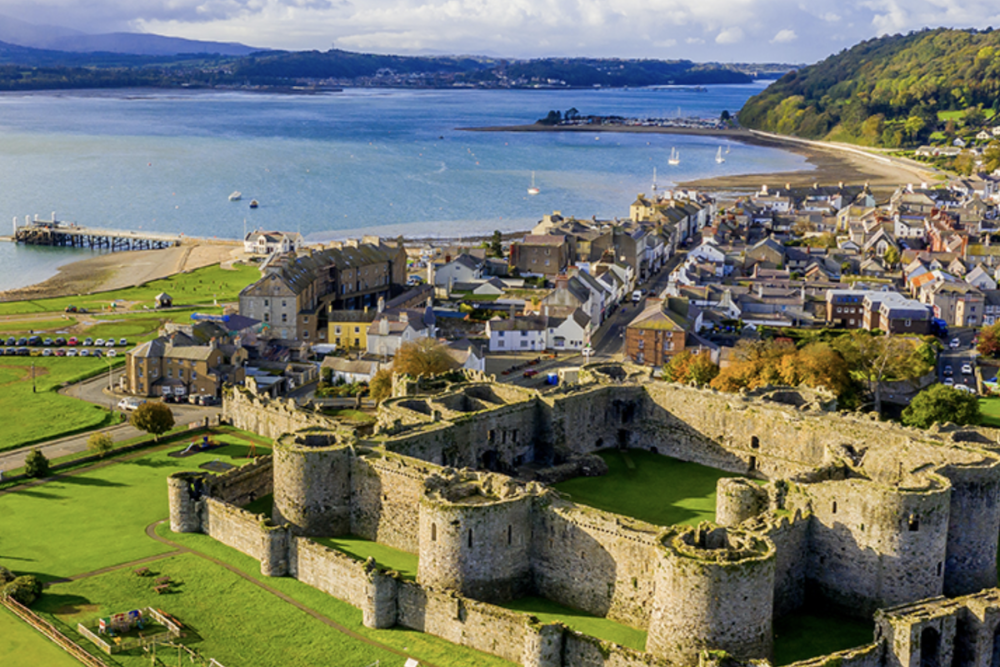
Beaumaris (Photo: Visit Anglesey)
One of Anglesey’s prettiest coastal towns, Beaumaris is speckled with pastel-washed fisherman’s cottages, Georgian architecture and brightly-painted shop fronts. It boasts the last and largest of Edward I’s “iron ring” castles, constructed in his bid to rule the Welsh. Designed to be his crowning masterpiece, the fortress is immense, with four concentric rings of formidable defences and a moat with its own dock. A stroll along the pier offers sweeping views over the Menai Strait and Snowdonia, while inland there are lively cafes, pubs, restaurants and shops to potter around. Boat trips run daily to Puffin Island, home to Atlantic grey seals, puffins, razorbills, kittiwakes and the odd porpoise.
Betws-y-Coed
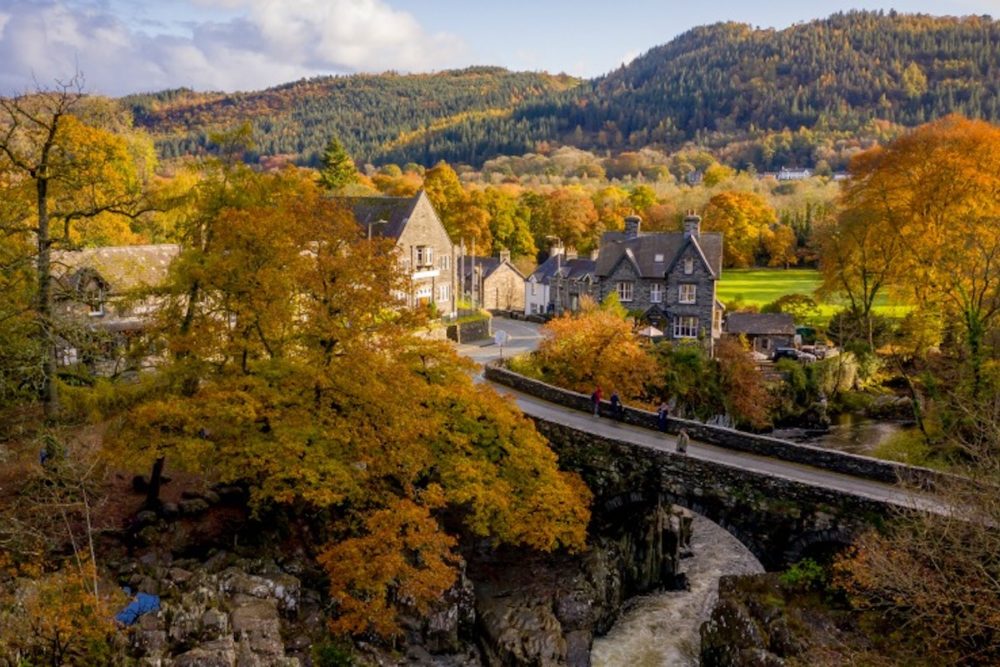
Betws-y-Coed (Photo: Visit Conwy)
Found at the confluence of three rivers on the fringes of Snowdonia National Park, Betws-y-Coed is a film-set perfect village that has captured the imagination of artists for centuries. Little wonder why: between its meandering rivers, surrounding forests and hidden valleys, it’s one of Wales’ most magical spots. The rural idyll is completed by a handsome 14th-century church, a traditional Welsh tapestry mill and several charming pubs. The biggest draws for adrenaline junkies are the surrounding glacial valleys and craggy canyons offering up canyoning, gorge walking, abseiling and zipline adventures aplenty.
Conwy
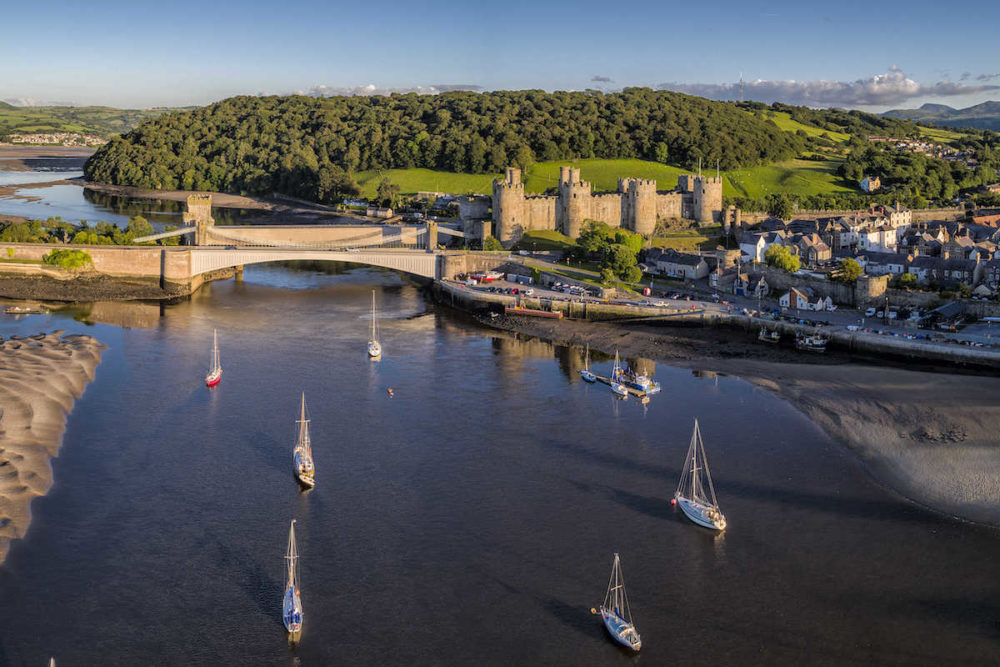
Conwy castle (Photo: Visit Conwy)
Surrounded by gently rolling hills and overlooked by the mighty mountains of Snowdonia, this walled market town is rich in history. There’s the foreboding 13th-century Conwy Castle and Walls, Bodysgallen Hall and medieval watchtower, and the magnificent Plas Mawr, said to be the finest standing house of its era. Conwy is also home to the smallest house in the UK, a pillar-box red one-up, one-down house measuring 10 x 6 ft. The quayside offers up the perfect setting for a sunny stroll or scenic perch for fish and chips, while a short drive over the Sychnant Pass to Conwy Mountain offers far-reaching views over the estuary and Iron Age hillfort.
Llanberis

Dolbadarn Castle (Photo: Visit Wales)
Llanberis sits at the foot of Mount Snowdon, alongside Lyn Padarm, one of the largest glacial lakes in Wales. It’s the starting point for the Llanberis Path up Snowdon, which makes it a popular stopping-off point for ramblers but there’s plenty to keep less active souls busy. The ruins of Dolbadarn Castle, a 13th-century fortress built by Llewelyn the Great, were the subject of paintings by Richard Wilson and J.M.W Turner and continue to draw artists today. The Snowdonia Mountain Railway squeezes between the village’s twin lakes and runs non-stop through Padarn Country Park and along the shores of Lake Padarn to Penllyn, offering show-stopping views of Snowdon, the highest peak in England and Wales.
Llandudno

Llandudno coast (Photo: Visit Wales)
Billed as “the Queen of the Welsh Resorts” since the 19th century, Llandudno is a quintessential bucket-and-spade seaside town. The sweeping promenade is lined with rows of wedding-cake Victorian homes on one side and a vast golden sandy stretch on the other. At the end of the beach is the pier – the longest in Wales – which comes complete with Punch and Judy stalls, penny arcades and traditional Welsh gift shops. Alice Liddell, the inspiration for Lewis Carroll’s fictional Alice, used to holiday here, and there are now statues of the book’s characters and 55 bronze rabbit footprints dotted around the town. On its doorstep is the Great Orme, a vast patch of near-wilderness with three waymarked trails that offer spectacular views of Snowdonia.
Llangollen

Llangollen (Photo: North East Wales)
The beautiful, bustling town of Llangollen is renowned for the International Musical Eisteddfod and Fringe Festival, but there are dozens of reasons to visit outside of July. Its charming winding streets are filled with locally-owned bookshops, homeware boutiques, fine food shops, cafes and pubs. The babbling River Dee cuts right through the heart of the town, which makes for dazzling riverside views at every turn. The town is part of the Unesco-listed eleven-mile stretch from Gledrid to the Horshore Falls, and the starting point for many of the area’s finest walks, from Castell Dinas Bran to the soaring Berwyn Mountains. For more information visit NorthEastWales.com
Llanrwst
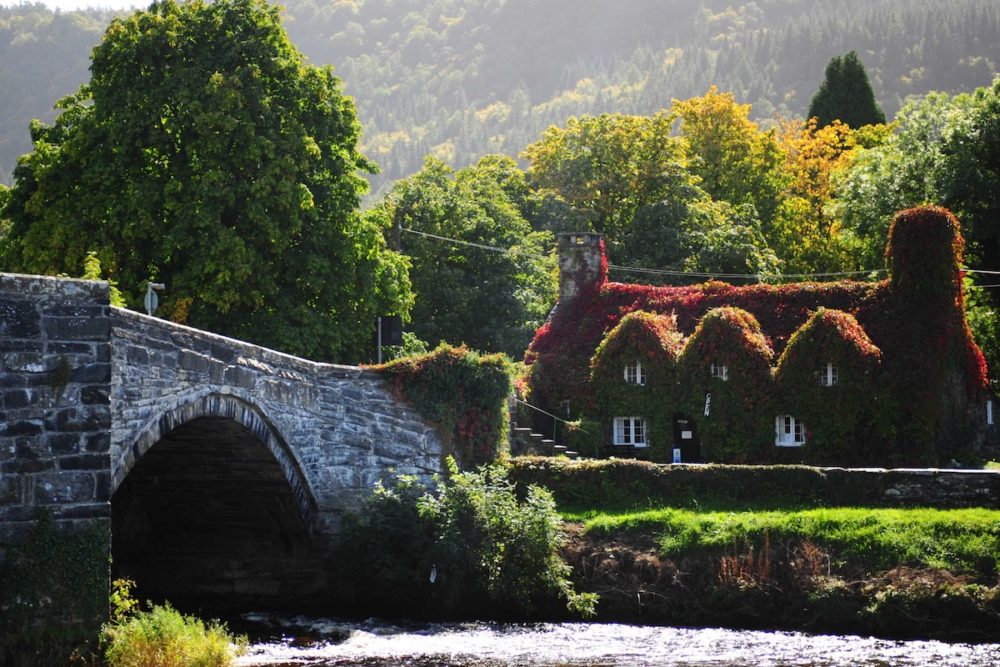
Pont Fawr and Tu Hwnt i’r Bont tea rooms in Llanrwst (Photo: Visit Conwy)
This tiny town snuggles into the verdant Vale of Conwy, flanked by thick forest and heather moors. The three-arched bridge, which rises elegantly over the River Conwy, is attributed to architect Inigo Jones. Just beyond it is one of the country’s best-looking tearooms Tu Hwnt i’r Bont, a restored 15th-century farmhouse that now sells homemade ham sandwiches, traditional bara brith and warm buttery Welsh cakes. Gwydir Chapel dates back to the 15th century and houses a heavy stone coffin, said to be that of the revered 13th-century Prince of Gwynedd, Llywelyn the Great. A short walk through a row of 15th-century almshouses leads to the handsome Gwydir Castle, one of the country’s few grand Tudor manors.
Portmeirion
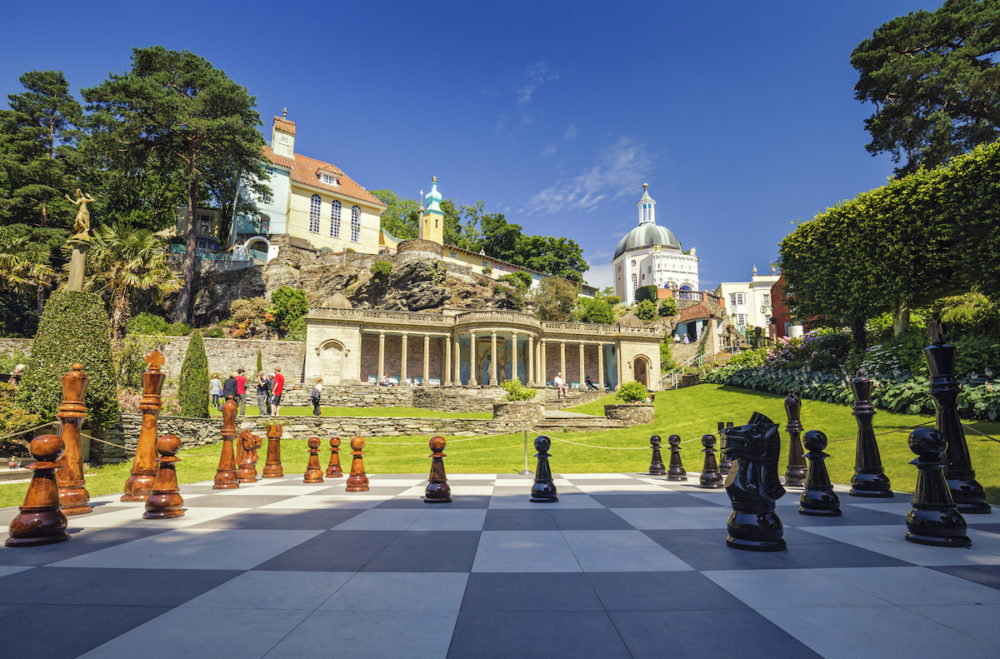
A plaza in Portmeirion (Photo: Portmeirion)
Picture-perfect Portmeirion is possibly northern wales’ most peculiar village. Built by Sir Clough Williams-Ellis between 1925 to 1975 on a private peninsular just outside the Snowdonia National Park boundaries, the 130-acre village is an ode to the multicoloured magic of the Mediterranean. Colourful villas are grouped around a central piazza, surrounded by sparkling sea views and extensive woodlands. To create the Italianate village, Clough used endangered buildings and unwanted artefacts from all over the globe and repurposed them as loggias, grand porticoes and terracotta-roofed houses. Surrounding the piazza, you’ll find a Town Hall, gelateria, a handful of cafes and two four-star hotels.
Ruthin
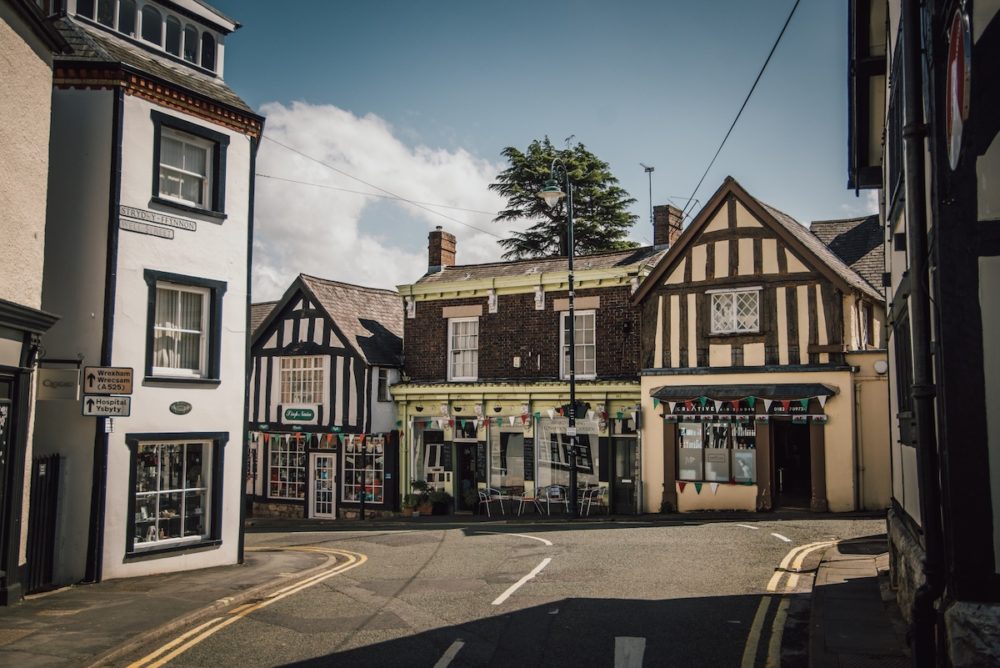
Ruthin (Photo: Visit Wales)
A pocket-sized town in the Vale of Clywd, Ruthin is the epitome of picturesque. Set against the Clywydian hills, it’s filled with Tudor houses, Georgian homes and characterful pubs. At the town’s heart is the 13th-century Ruthin Castle, which survived a revolt by Owain Glyndwr and a sixteen-week siege during the English Civil War, and now boasts a 21st-century spa, restaurants and Italian gardens. But while the town’s roots may be ancient, there’s nothing staid about this community, with annual events like the Gwyl Rhuthun Music Festival and Greg Aid Charity Music Festival. The Ruthin Craft Centre encompasses three galleries and six studios, while the newly opened historic market hall is a showcase for local arts, crafts and food. Ruthin made the 2022 edition of the Sunday Times Best Places to Live list too.